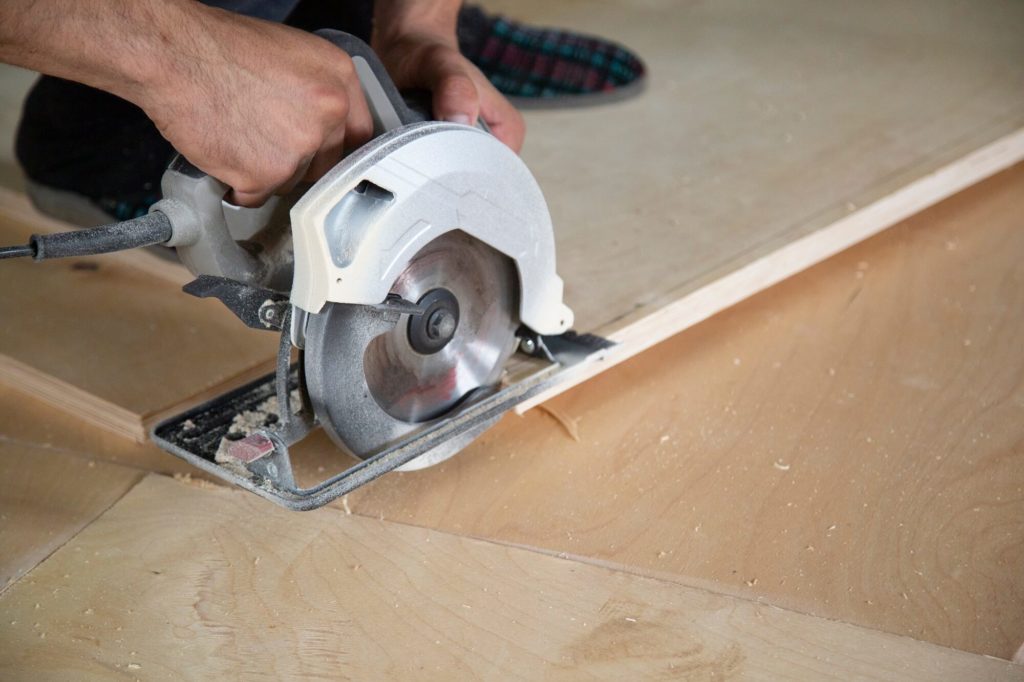Why APA Underlayment Plywood May Be Crucial to Your Project
When you are installing a floor anywhere in your home, there’s more than goes into it than simply selecting the flooring itself. The subfloor, underlayment, and the proper installation of both provides the support needed to achieve the best results with any flooring. APA plywood underlayment is a thin but durable material. It provides a smooth and level surface as a foundation for your flooring material.

Why APA Rating is Important
Plywood is crafted of thin layers of wood veneer from offcuts of wood veneer boards. The glued and pressed construction of this material can make it extremely durable. The construction process, however, can cause a lot of variation between boards.
APA ratings are provided to certain plywood and OSB sheathing used for flooring, walls, and roof applications. In order to receive an APA rating, plywood needs to meet a certain quality standard. When the plywood comes from a wood mill that has become an APA member by undergoing audits and verification processes to ensure the quality of the sheathing they produce. The APA rating alone does not help you find the correct material for the job. Plywood comes in more than a dozen different thicknesses and more than twenty different grades, each with a specific purpose.
The Difference Between APA Underlayment Grades
The APA makes it easy to identify the quality of the underlayment panel using their grading system. The grading letters include A, B, C, and D. A is the most flawless of all the grades, featuring the fewest blemishes and the smoothest surface. From there, it progressively goes down with each letter, making D the grade with the most blemishes.
Two Letter System
Because these letters apply to the quality of a single side of the plywood, a two-letter combination is often used to let you know the grade of both sides of the wood. A panel can feature an A-grade on one side and a C on the reverse.
Exposure
In addition to offering a letter grading, the APA plywood underlayment also features an exposure rating. Exposure 1 plywood is graded for indoor use only and should experience minimal water exposure at most. Plywood with an Exterior rating is suitable for outside use with repeated water exposure. This rating doesn’t mean it has to be used outside. The Exterior rating makes it a great option for use in bathrooms and kitchens, as well.
Thickness
The final mark on the APA rating is the thickness of the plywood. When you’re using the plywood as an underlayment, look for one that is at least 11/32 inches thick.
Selecting & Handling APA Underlayment Plywood
The worst thing for plywood is moisture. As such, make sure to protect your APA plywood underlayment from moisture prior to installation. Bring them into the space where they will be installed and allow them to become acclimated with the temperature and humidity of the room for several days before installation. This will help to prevent any expansion or contraction that could cause issues down the road.
Our Top APA Underlayment Installation Tips
- Check the subfloor for squeaks before installing the final flooring. Installing the boards properly reduces squeaking and ensures a more soundproof installation of your flooring.
- Ensure the subfloor is even and installed with the correct fasteners and spacing.
- Install the underlayment grain perpendicular to the direction of the floor joists.
When to Use an APA Plywood Underlayment
With Certain Types of Flooring
Vinyl flooring and adhered carpet require plywood underlayment. This is because these materials can be unforgiving of any defects in the subfloor.
Condition of the Subfloor
The underlayment ensures a smooth and even surface for the flooring. If you have a well-installed subfloor or concrete subfloor free of dips or cracks, an additional plywood underlayment may not be necessary.
When Warranty Requires It
Some flooring types require a plywood underlayment to be in place in order for the requirements of the warranty to be met.
When You Anticipate Changing Out Flooring
Using an underlayment also helps to provide a layer of protection between the final flooring and the subfloor, making it easier to change out the floors in the future.
By choosing APA plywood underlayment for your flooring project, you’re ensuring that you start your project off with the right surface. The specific grading method used by APA makes it easy to find the right sheathing for under a living room floor or a master bathroom retreat. If you are unsure if you need underlayment for your flooring, speak with a BuildDirect expert.

